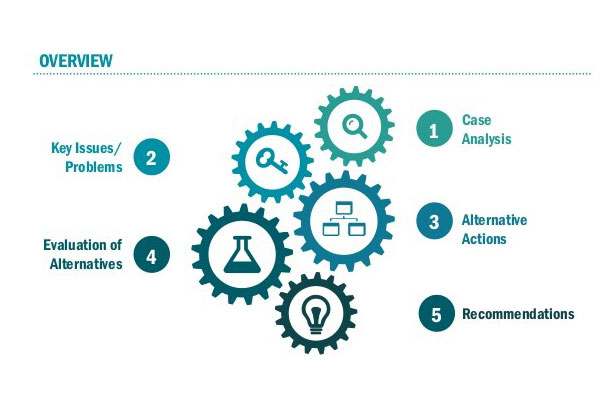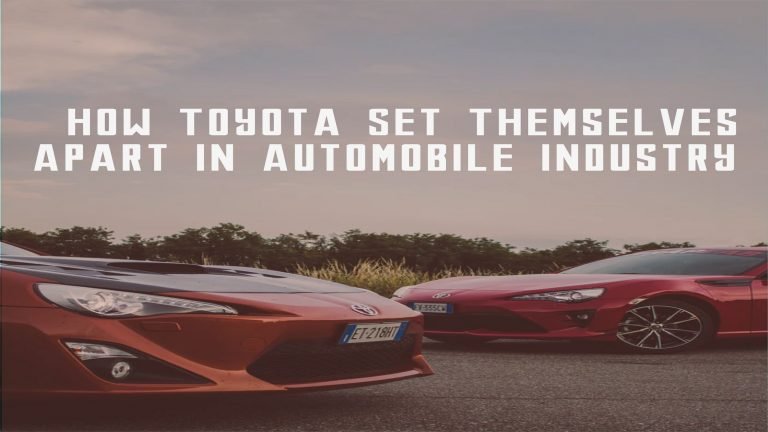After the invention of the wheel & steam engine, the whole world witnessed the most organized & most rebellious way of revolution in the then transportation & communication industry. Starting from the renaissance, many automobiles company comes & go. Some companies were going bankrupt; on the other hand, some companies touch the peak of success & rule the automobile industry.
Among all of the companies, Toyota becomes such a company that starts its journey from scratch & now they are ruling the automobile industry. Coming from a country like Japan, which was destroyed during the second world war, Toyota shapes Japan’s economy and worldwide automobile industry.
Day by day, Toyota set themselves apart from other automobile company & make themselves as a market leader in the automobile industry. But like further success, this success never comes to Toyota overnight. Their strategy, their planning, their production strategy, etc. are behind this huge success.
Let know about the story of Toyota. The success story of Toyota is such a case study that helps entrepreneurs identify a perfect strategy for their business with sustainable development. This blog focuses on how Toyota become the automobile giant, despite being an automobile company of Japan which was debris once upon a time.
Related: Triadic Closure Property- Key to Facebook Success
About Toyota

Toyota is one of the world’s most well-known automobile brands headquartered in Japan. It is also renowned for the excellence of its manufacturing techniques and operations management. Toyota is the manufacturer and worldwide marketer of automobiles and replacement components.
For the first moment in decades, Toyota has become the world’s biggest automobile manufacturer during 2008, outclassing General Motors. Toyota had been founded in 1937, becoming the first Japanese car industry leader. The family legacy of the company’s owner is what the company’s name was derived upon.
Toyota is the manufacturer and worldwide marketer of automobiles and replacement components. At present, the firm has 53 production subsidiaries located in 28 countries around the world. Customers in far more than 170 countries worldwide purchase cars from the business. In 2015, Toyota was listed as the 11th-largest company globally by Forbes, which used a combined measure of several company values such as sales, earnings, resources, and valuation.
After redesigning the Toyota Corona specifically for American drivers, the vehicle was launched in 1965. It became the company’s first considerable success on the American market. A significant expansion occurred between 1960 and 1970 when the business exported vast quantities of cars to international markets.
Over the course of many decades, Toyota remained Japan’s biggest automaker. A reputation for affordable, fuel-efficient, and dependable cars like the Corolla, introduced throughout the United States in 1968, helped Toyota survive and thrive throughout the American market.
With breakthroughs, including its premium product Lexus introduced in 1989 and indeed the world’s first mass-produced hybrid-powered car, the Prius unveiled in 1997, Toyota enjoyed considerable growth far into the 21st century.
Several nations are home to Toyota manufacturing factories and distributors in the 21st century. Additionally, its companies produce rubber and cork materials, steel and synthetic polymers, and cotton and woolen items via its subsidiaries. At the same time, others are involved in property investment, ready-made houses, and raw material imports and exports.
Secret Sauce of Toyota’s Success
If any of you look over the internet, you will find many articles about Toyota’s incredible success. Many think that the beautifully maintained supply chain is the secret.
Some believe that discipline is the secret. But very few talk about the production operations strategy, which is the sole reason for Toyota’s success.
Today, we know about the production operation strategy of Toyota. A detailed discussion about Toyota’s production operations system helps future entrepreneurs to create or shape a unique, distinctive, but very much workable strategy for their business.
Related: Sun Tzu’s Art of War in The Business World
Toyota Production System Concepts

World War II led Toyota to create its production system, which they named Toyota Production System. After World War II, Toyota’s market in Japan was tiny. Within the same production line, Toyota still had to produce a range of cars to meet its customers’ demands.
Believing in its employees and cultivating a continuous improvement culture is at the heart of the Toyota Production System (TPS). For example, Toyota exclusively hires the finest and brightest employees when it introduces production lines. They are also continuously challenged to develop in their professions by tackling new difficulties.
Toyota uses a similar approach in its sales staff and support and manufacturing, finance, and human resource departments. Toyota enables its employees to enhance their operations and discover new methods to serve its consumers.
1. Jidoka

Quality issues that must be incorporated into production processes are highlighted or visualized in Jidoka. As soon as a machine malfunctions or a faulty component is found, it automatically shuts down. The operators shut down production to fix the issue.
A specified level of quality must be met by all components manufactured and delivered for the Just-in-Time mechanism to operate. Jidoka is the means through which this is accomplished.
Whenever a machine accomplishes functioning or encounters a problem, the problem display board notifies the operation to halt. In addition, operators can quickly determine the problem’s source to avoid a recurrence. There are more machines available for a single person to manage. This increases productivity while improving processing power.
2. Just-In-Time

As a result of the just-in-time philosophy, “what is required, when it’s required, and in quantity required” is produced. As a result, waste, inconsistency, and excessive demands on the manufacturing line are eliminated. When building a vehicle requested by a client, the following guidelines are followed to ensure that the vehicle is constructed effectively and in the least amount of time feasible.
- Whenever vehicle orders are received, a manufacturing direction must be sent as quickly as possible towards the commencement of the vehicle manufacturing line.
- Any kind of requested car must be able to be built if the assembly line is supplied with the necessary quantity of all essential components.
- To replace the components utilized primarily on the production line, the parts-producing mechanism must produce an equal quantity of new parts.
- Small quantities of all kinds of components must be stored in the previous process, which must produce just the number of components obtained from the following process via an operator.
The just-in-time system is designed based on decades of continual advancements, only with the goal of producing the cars requested by customers in the fastest and most efficient manner, in order to achieve these automobiles as quickly as feasible.
3. Poka-Yoke

Poka-yoke is a Japanese term that meaning to eliminate mistakes. Unintentional mistakes (poka) must be avoided (yokeru) for behavior to be modified. To avoid mistakes, it sets restrictions about how a process may be done, forcing it to be completed correctly.
In this way, Poka-Yoke prevents problems from happening in the first place. Instead, Poka-Yoke serves a detective role, removing faults as early as feasible throughout a production process. To avoid, rectify, or call emphasis on human mistakes when they occur.
When anything goes wrong, or a mistake is made, Poka-yoke may be applied. To develop poka-yoke responses, a three-step examination of the threats to be controlled has been suggested.
- Identifying the problem
- Identifying errors that may occur
- before fulfilling the demand, errors must be managed
To highlight the technical element of developing successful ideas during brainstorming sessions, this method may be utilized.
4. 3M Model

Muda, Muri, and Mura are three adversaries of lean that Toyota has worked to eliminate in its manufacturing system.
As a Japanese word, Mura refers to unevenness or disproportion. Furthermore, this is the first of three kinds of the enemy of the lean manufacturing system (Muda, Mura, Muri) that the Toyota Production System recognizes.
Variations in consumer demand, product processing delays, or capacity utilization for various operators are all examples of MURA in the real world. Agility is more essential in low-volume, high-variation production settings than in high-volume, low-variation production contexts.
It is possible to decrease Mura through increasing transparency in the supply chain, changing product design, and establishing continuous integration for all operators, among other things.
To overload or be excessive is to use the Japanese word Muri. Additionally, this is the second of three kinds of the enemy of the lean manufacturing system (Muda, Mura, Muri) identified by the Toyota Production System. It is possible to prevent Muri by standardizing work procedures.
Overburdened workers or equipment are required to do their tasks at a rate upwards of 100 percent. This translates to machine failures and staff absence.
It is possible to do preventive and autonomously servicing machines to maximize their efficiency and ensure that they operate correctly. When it comes to procedure development and standardized working performance, safety should be a primary concern to avoid overworked workers.
As a Japanese word, Muda refers to waste. Furthermore, this is the third of three kinds of the enemy of the lean manufacturing system (Muda, Mura, Muri) that the Toyota Production System recognizes. There are numerous ways available to identify and remove Muda from the production process.
Muda is a direct impediment to the flow of information. There are eight different kinds of Muda, all of which result in extended lead times. The Muda cannot be removed by itself.
Muda is typically in it for a purpose. This reasoning is frequently related to the other two adversaries, Muri and Mura. In other words, the three opponents of Lean are interconnected. They must be considered carefully at the same time as one another.
5. Andon

To alert management and subordinates to production or operational problems, Andon is an industrial name for a signboard that incorporates signal lights, audible alerts, typography, and other indicators.
Andon supports openness within teams and the identification of problems rather than their hiding for fear of being judged by others. Instead of pointing fingers and blaming others, it focuses on finding solutions to quality and safety problems.
Toyota has used Andon cords to help workers quickly raise issues in the production line as they occurred. Pulling the cord initiated a signal sent to the supervisor to review the issue. The Andon notification is displayed using a colour-coded light system that indicates the current status at each workstation.
The supervisor performs by going to the area of concern and investigating the problem. The system will typically indicate where the alert was generated and describe the trouble.
Because Toyota has indeed been growing and improving for more than a decade, it is a genuine company that is always learning. Several American businesses have adopted lean technologies but do not grasp what makes them operate together systemically. Their lack of understanding of genuine TPS is a significant hindrance. Toyota’s philosophy of continual development is the key to this.
Related: Razorblade model- A Business Strategy Which is Must Known for Entrepreneurs
End Note
Did you know that one of the reasons for Toyota’s success is creating a way by themselves for themselves which is entirely distinctive from the rest of the world?
In this article, we explained why & how, despite being a Japanese company & being on the verge of becoming destroyed, Toyota flourishes in a few years of reign in the automobile world & become a mammoth in the industry.
If you want to learn more about how Toyota successes & how you can employ TPS concepts in your business, enroll in our Digital Marketing Course today!
With one of our courses, not only will you become a better marketer but an expert on human behavior too. We offer classes that show you how people think and why they do what they do when it comes to your products or services.
And guess what? You don’t need any previous experience with design tools like Photoshop or Illustrator. Just bring along a laptop with WiFi access, some time for class-related assignments, and your eagerness to learn something new!
There are still a few seats left for the next session, so don’t wait too long before signing up. We hope you enjoyed reading this blog post and learned something new from it.






































